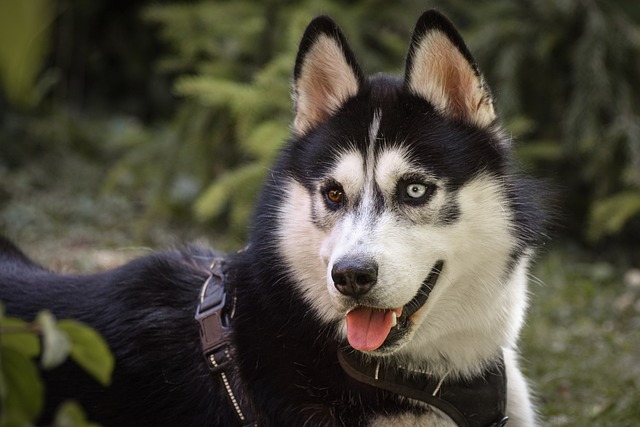
How can I tell if my dog's heatstroke is serious
Let’s be real: It’s a sticky August morning in Los Angeles, and you took your 2-year-old Golden Retriever, Max, for a walk a little later than usual
Picture this: You’ve just slipped on your favorite black sweater, ready to head out for coffee. Your dog, with a wagging tail and a glint in their eye, bounds over for a cuddle. Suddenly, you’re covered in a layer of fur that seems to multiply with every movement. If this sounds all too familiar, you’re not alone. Brushing a shedding dog isn’t just about keeping your clothes lint-free—it’s essential for your pet’s health and happiness. Let’s explore the ins and outs of taming that furry flurry.
Dogs shed for various reasons, and understanding the science helps you tackle it effectively. Most shedding stems from a natural cycle: a dog’s coat renews itself as old hairs fall out to make way for new growth. Breeds with double coats, like Huskies or Golden Retrievers, often experience “coat blows” twice a year, while others shed year-round. Factors like diet, stress, or indoor heating can also ramp up shedding. Think of it as your dog’s body adjusting to its environment, just like you’d swap your winter boots for sandals in spring.
Now, let’s get down to the nitty-gritty of brushing. First, arm yourself with the right tools. A slicker brush works wonders for removing tangles and loose fur from the topcoat, while a deshedding tool (popular ones include Furminator and Hertzko) targets the dense undercoat. For sensitive areas like the belly or face, a soft rubber grooming glove provides a gentle touch. Before you start, create a calm atmosphere. Lay out your dog’s favorite treats, turn on some soft music, and make sure your workspace is free of distractions—just like setting the mood for a relaxing spa day.
When brushing, start at the head and work your way down, following the direction of hair growth. Use short, gentle strokes and be extra careful around joints and sensitive spots. If you hit a stubborn mat, resist the urge to pull; instead, use your fingers or a wide-tooth comb to slowly separate the strands. Reward your dog with a treat every few minutes to reinforce positive behavior. Remember, brushing should be a bonding experience, not a battle. Positive reinforcement, like treats and praise, is key in American pet culture—it’s not just about getting the job done, but building trust with your furry friend.

In the U.S., pet care comes with responsibilities that go beyond grooming. First and foremost, ensure your dog’s vaccines are up to date. Rabies shots are mandatory in almost every state, and proof of vaccination is often required for places like dog parks, groomers, or even some rental apartments. When you’re out and about, always clean up after your dog. In cities like New York or Los Angeles, failing to scoop the poop can land you a hefty fine of up to $250. And here’s a cultural tip: physical punishment is a big no-no in American pet care. Whether during grooming or training, focus on positive methods. Yelling or hitting not only damages your bond but also goes against the country’s animal welfare values.
For apartment dwellers, regular brushing becomes even more crucial. Set up a grooming routine (aim for 3 - 4 times a week during peak shedding seasons) to keep fur from spreading through your home. Consider using a pet hair vacuum or investing in a lint roller to keep your living space tidy. When walking your dog in shared areas, be mindful of your neighbors. Keep your dog on a leash, teach them basic commands like “heel” and “sit,” and always ask before letting your dog greet others. Good community etiquette makes life easier for everyone—both two-legged and four-legged neighbors.
So, the next time your dog’s shedding seems overwhelming, grab that brush, some treats, and approach it with patience. By understanding the science, using the right techniques, and respecting cultural norms, you’ll transform brushing from a chore into a chance to strengthen your bond with your beloved pet—all while keeping your home a little less fuzzy.

Let’s be real: It’s a sticky August morning in Los Angeles, and you took your 2-year-old Golden Retriever, Max, for a walk a little later than usual

You're enjoying a summer afternoon at the park when you notice your dog has stopped panting and appears disoriented - their gums are bright red

Let’s paint the picture: You’re in your Denver apartment, watching your 4-year-old Boston Terrier, Ruby, plop down mid-play session with her favorite toy

Many dog owners notice their pets nails seem shorter after regular walks,but how much does this daily activity actually help?The answer depends on where you walk—concrete sidewalks or asphalt streets gently file nails as a dog's paws hit the ground

Most dog owners notice their pup scooting across the carpet at some point, but few connect it to impacted anal glands. These small sacs near a dog’s rectum secrete a scent for marking territory

Most vets agree that regular dog teeth cleaning is key to avoiding painful dental issues later. For healthy adult dogs, a professional cleaning at the vet’s office every 12 to 18 months usually works well.